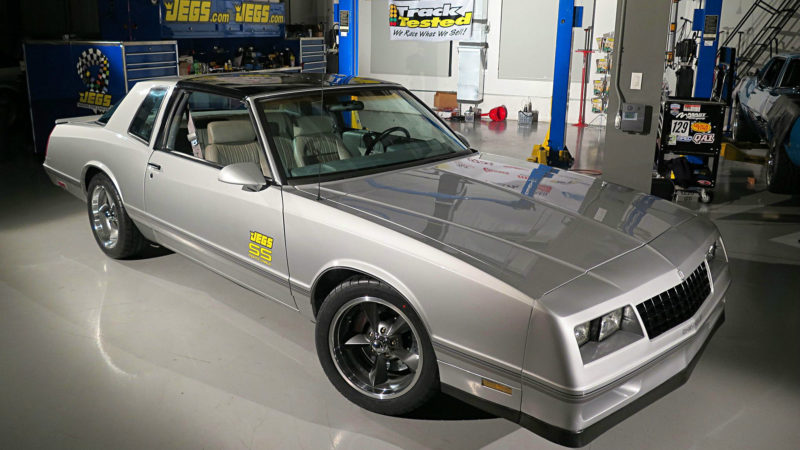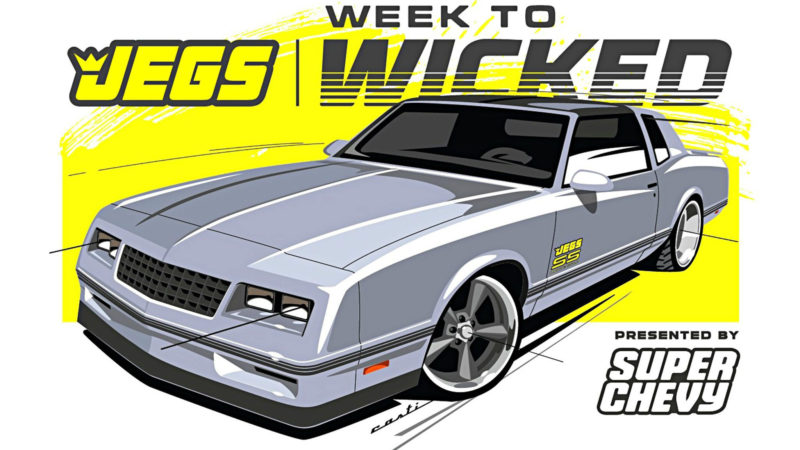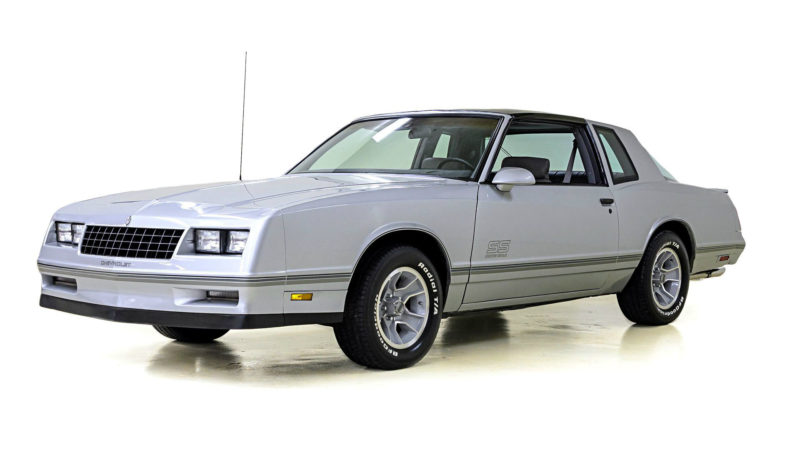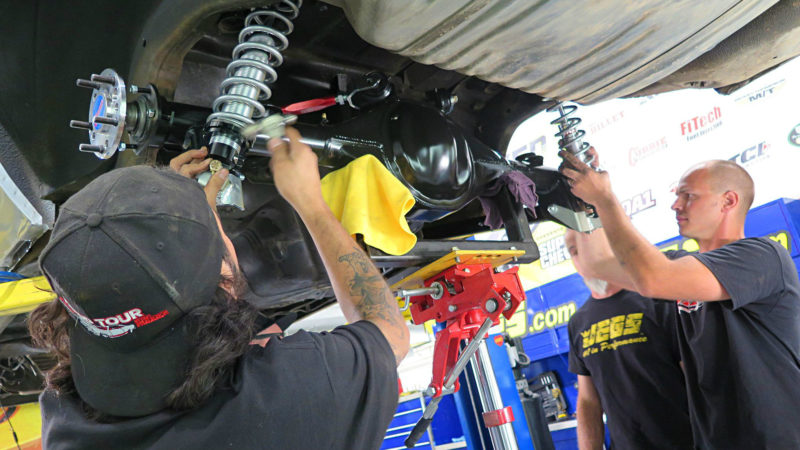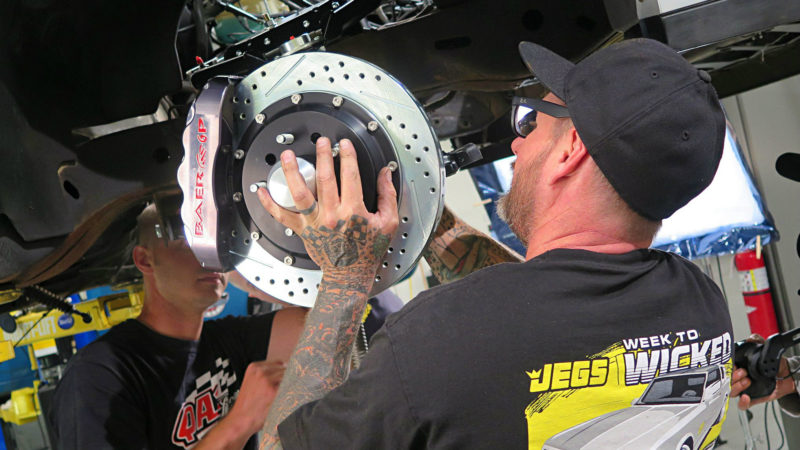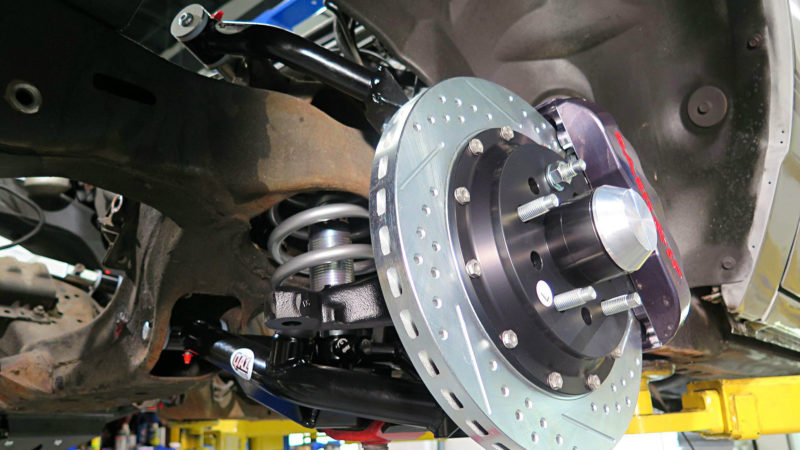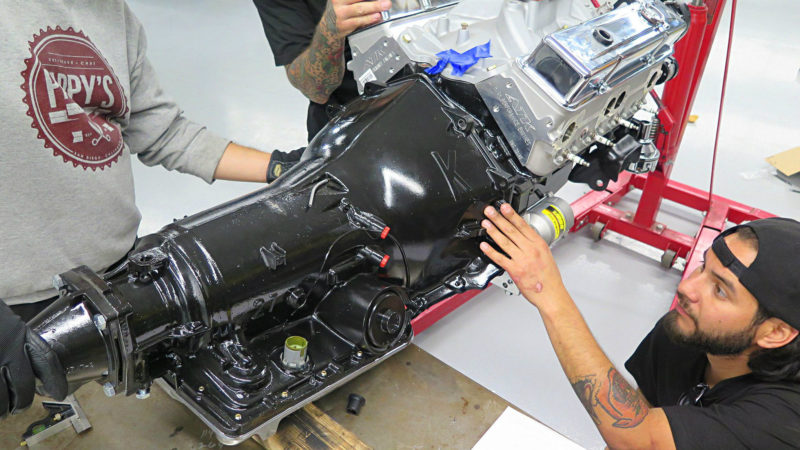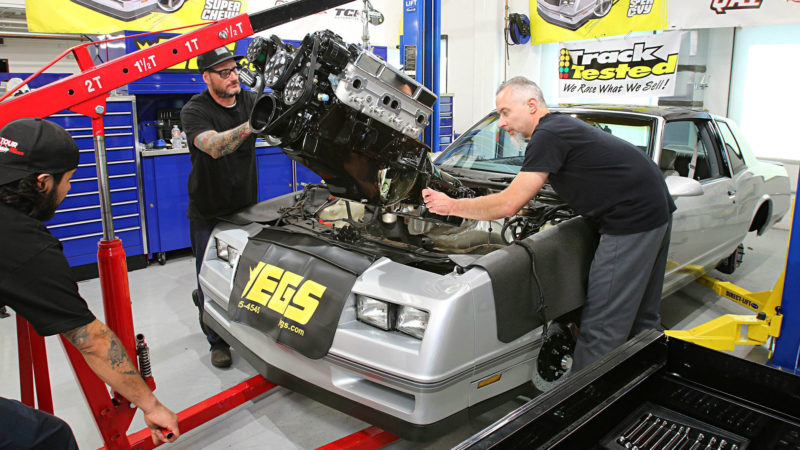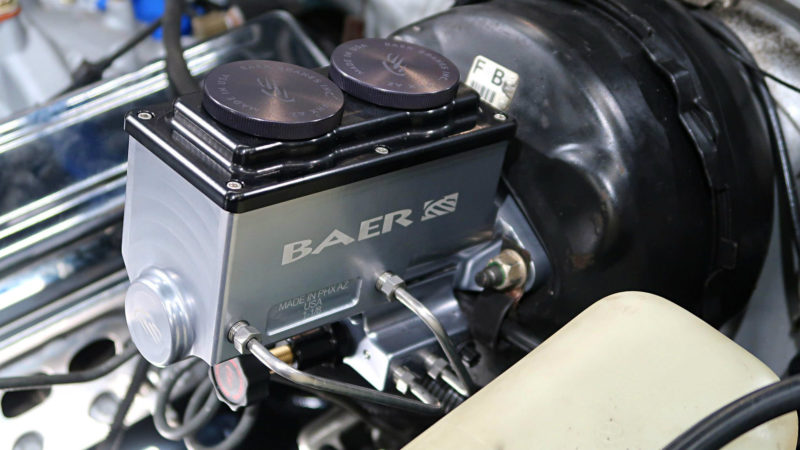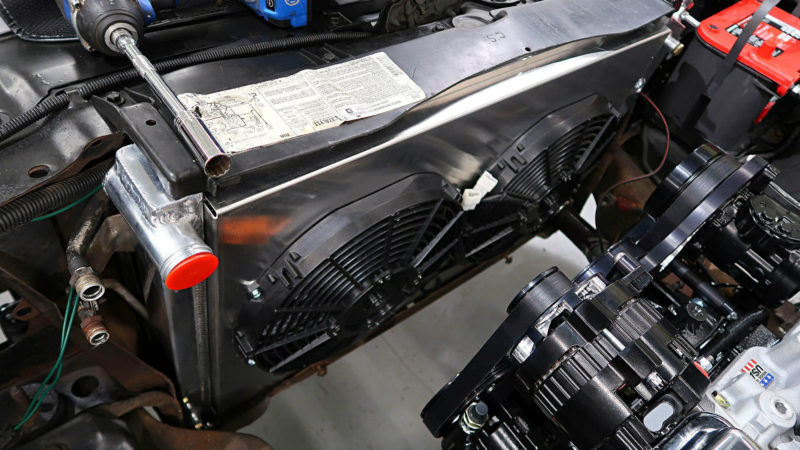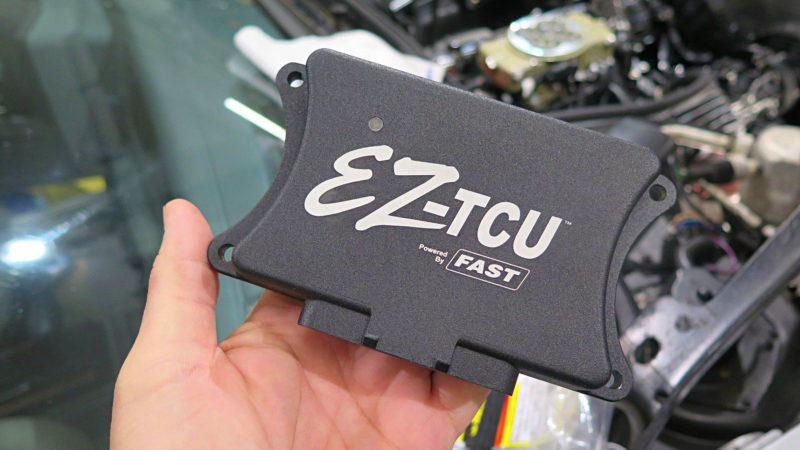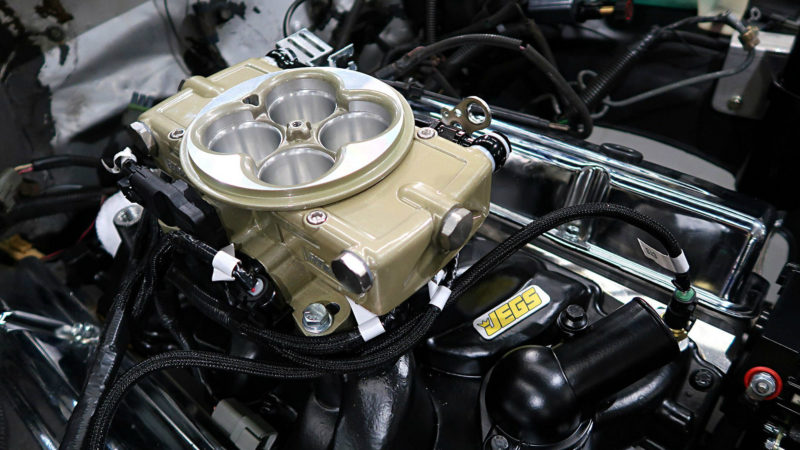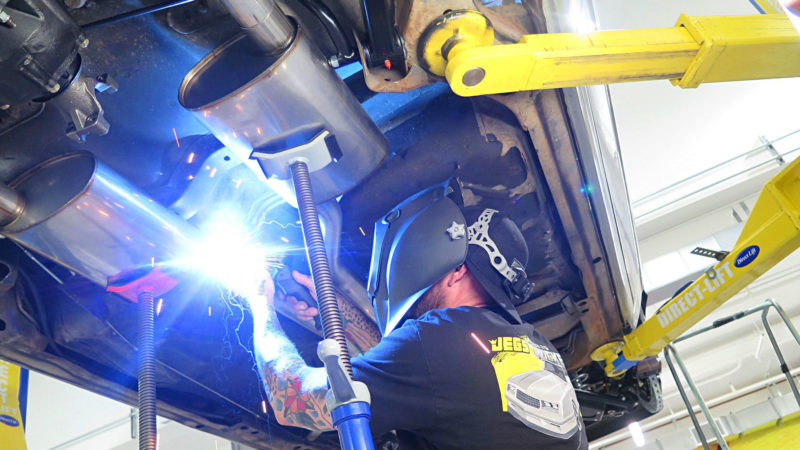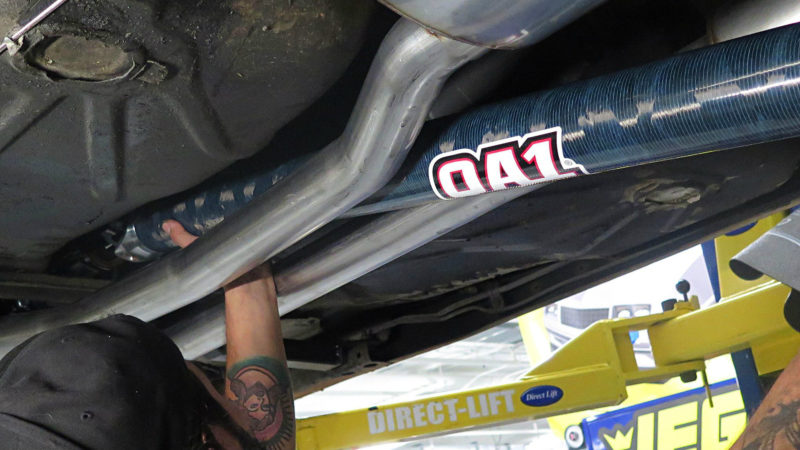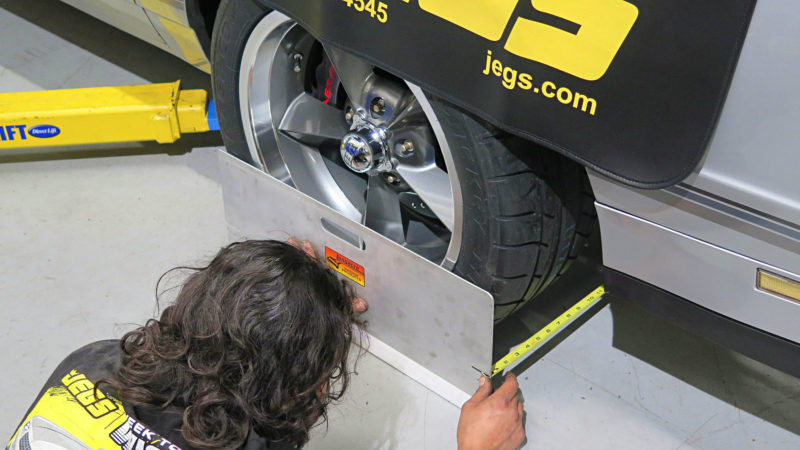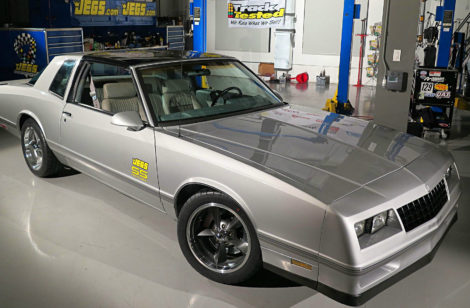W2W Monte Carlo Aerocoupe
FollowVehicle Quick Facts
Profile ID: 30876
Year: 1987
Make: Chevrolet
Model: Monte Carlo
Markets: Classic & Antique, Performance
Vehicle Type: American
Contact: Week To Wicked
![]()
Vehicle Story
Monday we spent the morning stripping all the old parts from the Monte Carlo, which is actually pretty fun to do. After lunch though the real work began. Starting with the Currie 9-inch rearend we tackled the rear QA1 Level 3 rear suspension. Adjustable upper control arms, double-adjustable coilover shocks, and a performance sway bar will be a huge improvement over the stamped steel stuff we removed. Up front the we installed the other half of the QA1 Level 3 suspension kit which included their race-ready upper control arms, tubular lower arms (with high-durometer bushings), and a much stiffer hollow swap bar in addition to another pair of coilover double-adjustable shocks. For brakes Jegs sent a complete, ready to install, system from Baer which included 13-inch two-piece rotors and their 6P calipers in a clear black finish. The 6P calipers, front and rear, utilize a 6-piston arrangement and can run easy-to-source Corvette C6 brake pads. The brakes came pre-assembled complete with a G-body spindles, which saved us a ton of work.
Day two of our Week To Wicked builds was a bit tough. After all, on day one so much happened in terms of progress. The old parts were ditched and a ton of new parts were bolted in place including the Baer brakes, QA1 Level 3 suspension, and Unisteer rack system. But day two turned out to be more about prepping the car for its new driveline from Jegs. Yea, most of the morning was spent buttoning up items from day one and getting the 500-hp 383 small-block ready for its new G-body home. But, it’s a process and some parts move faster than others.
First up was installing the billet serpentine drive system from All American Billet and a shiny new mechanical fuel pump from Jegs. The engine will be getting a FiTech fuel injection system, but to get the engine installed into the car we tossed on an extra intake we had in the shop (so we had a place to bolt our lift plate to). While the engine and Jegs 4L60 transmission were getting prepped we finished up the rear Baer brakes, messed with the linkage for the Unisteer rack and started sorting the “ still need” from the “no longer needed” mess of wires and hoses in the engine bay.
Our 1987 Monte Carlo SS Aerocoupe came from GM with a sluggish 180 hp (an optimistic number) 305-inch V-8 carbureted mill. The new ATK stroker from Jegs is rated at just over 500 hp, so the difference in performance should be night and day. To get the engine in place we swapped to some clamshell-style engine mounts with poly bushings and a Jegs transmission crossmember. With all of that done we slid the engine hoist into place and lowered the engine/transmission assembly into place. The long nose of the Monte Carlo gave us a headache so we fired up the forklift since it had extra reach. With a bit of effort, and a few bleeped out words, we persuaded the small-block into place and bolted everything down.
Day three of our Jegs Week To Wicked build was a bit of a grind. Mostly because it involved the less glamorous and somewhat tedious task of wiring and plumbing. Certainly necessary tasks, but somewhat less exciting than bolting on cool widgets. The Jegs supplied 4L60 transmission was mated to the 1987 Monte Carlo SS Aerocoupe’s shifter linkage and we continued hooking up the ATK 383 small-block. We did have a small hiccup when the headers didn’t fit since we didn’t realize the ATK stroker had raised port heads. After a quick call to Jegs the replacement headers were ordered and will be here tomorrow. Hey, it’s all part of hot rodding, right?
One of the last major parts to be installed was a complete FiTech EFI system. This was their new Classic system which is rated at 650 hp, more than enough to handle our 500+ hp ATK mill. The carburetor-styled EFI unit was mounted to a Jegs dual-plane intake and will be fed by FiTech’s new Command Center 2. This compact tank is fed by the low-pressure mechanical fuel pump and then pressurizes the fuel for the EFI system. The Command Center two came with an integrated regulator and pressure gauge along with fittings and some push lock hose. It’s a super easy way to get EFI performance and as a bonus it looks great. The throttle body uses carb-style linkage, so it was very easy to integrate into our SS. Once the FiTech was in place we set the engine to TDC and dropped in the Jegs distributor.
We also started our cooling system by installing a Champion aluminum radiator complete with dual fans and a fan controller. Having this in place allowed us to start fabricating radiator hoses, and so it went. Wiring, installing, plumbing, fabricating brackets were all tasks happing throughout the day. We even found time to ditch the non-functioning aftermarket stereo in the SS and replace it with a slick Bluetooth-equipped iPod-ready unit from Retro Sound that fit perfectly into the stock dash. The slick Baer master cylinder, with integrated proportioning valve, was put in place, but that meant we had more… you guessed it… plumbing to get done. Hey, nobody ever said this project would be fast or easy, but we’re just past the halfway point and it’s looking like we might have some late nights in our tech center.
At the end of day four we’re a bit beat and like yesterday much of the work involved plumbing, wiring, or hooking up systems that were installed over the past few days. The hard lines for the Baer 6P brakes were finished and we started the bleeding procedure. On the wiring side we hooked up the fan relays, but instead of using inline fuses we went with 30 amp breakers. And so the day went, wire in the vacuum pump, clean up the wires running to the Jegs starter, fine tune the shifter linkage; it was a list that seemed to get longer as we went, but by the end of the day quite a few things were marked off of our to-do list.
In other happy news our headers arrived from Jegs and they fit the tight confines of our engine bay perfectly, even with the raised ports on the ATK heads. With that done we could turn our attention to one of the last “big” projects, the exhaust system. Jegs had send us over a very nice G-body kit featuring pre-bent, stainless, 2.5-inch pipes and a pair of stainless high-performance mufflers. Having the pre-made kit saved us a ton of time, but we still spent time making sure everything was exactly where we wanted it before tacking it place. The only part we had to make was the transitions from the mid-length headers to the Jegs exhaust system. Overall the kit was easy to get in, looked great, and we can’t wait to hear how it sounds tomorrow when we finally fire up our ’87 Aerocoupe project.
The final day of our weeklong transformation of Jegs’ 1987 Monte Carlo SS Aerocoupe was a long one, as is typical with our Week To Wicked builds. After all, when you’re replacing just about every mechanical part on a car there are bound to be setbacks and things you need to figure out. There are also far more little things that need to be handled than it seems. It’s the automotive equivalent of “death by a thousand cuts” where dozens of small tasks, none requiring much time, pile up into a very long 18-hour final day.
For those that might be just joining this build we started with a bone stock 1987 Monte Carlo SS Aerocoupe. What’s an Aerocoupe you ask? Well, G-body fans already know, but for the uninitiated this car first appeared in 1986 when just 200 examples were produced. Why so few? Well, back then NASCAR was actually tied to real cars and 200 was the magic number required by NASCAR for a model to be considered a true production car. Based on the Super Sport it had an extremely sloped (25-degree angle) rear window and a shorter trunk lid with a flatter-than-normal rear spoiler. With these changes the shape was much more conducive to slicing through the air at a NASCAR race. Dale Earnhardt went on to successfully race this Chevy for years. Aside from the 200 examples built in 1986 GM also churned out just over 6,000 examples in 1987. After that the Aerocoupe was discontinued.
Nothing on the car helped with performance, but the biggest culprit was the anemic 180-hp carbureted 305-inch engine. And that 180 number was pretty optimistic in terms of our 30-year-old g-body. The mushy suspension, vague steering, and meh brakes, took a lot of fun out of driving the Monte. So, on day one we removed all the worn, tired, and underperforming parts from the SS and started with a clean sheet of Chevy.
By Friday most of the performance parts, such as the QA1 Level 3 suspension, Baer 6P brakes, Champion cooling system, Unisteer rack-and-pinion, Canton reservoir, Currie 9-inch, and the ATK 383 stroker fitted with an All American Billet serpentine drive system and a FiTech EFI system were in place. And that doesn’t even cover the metric ton of Jegs branded parts that went onto the SS.
Friday was filled with dozens of small tasks. We bled the Baer brakes, finished installing the FiTech EFI kit, and chased a few leaks after adding oil, water, and other fluids to the various systems. We also installed the FAST Transmission Control Unit (TCU) to the mix to control our Jegs 4L60 overdrive transmission. Late in the afternoon the SS fired up for the first time, but we still had a ton things to get one. We also realized that our g-body’s tank was filled with old, likely low-octane, gas that smelled a bit sketchy. So we drained what was in there and filled with the finest 91 octane that passes for premium here in California. The guys from ATK were here to help set the timing and make sure all was well with their badass sounding 500 hp mill.
We also had to snug up the suspension and use our toe plates to get some sort of alignment in the car. One of the last things we did was to install a beautiful QA1 carbon fiber drive shaft between the Jegs transmission and the Currie 9-inch. With the Jegs Old School wheels, wrapped in Mickey Thompson rubber, on the car we set the Monte Carlo back on the ground for the first time in 5 days and continued working through small tasks to get it ready for a drive. The work continued until just before midnight when the Jegs SS was ready to venture into the night.
Build Sheet
Manufacturers
- All American Billet - Billet serpentine drive system
- Baer Brakes - 13-inch two-piece rotors and 6P calipers, Master cylinder
- Canton Racing Products - Reservoir
- Champion Cooling Systems - Aluminum radiator complete with dual fans and a fan controller
- Currie Enterprises - 9-inch rearend
- FAST- Fuel Air Spark Technology - Transmission Control Unit
- FiTech Fuel Injection - Fuel injection system
- JEGS - Mechanical fuel pump, 4L60 transmission, starter, Old School wheels
- MICKEY THOMPSON TIRES & WHEELS - Tires
- QA1 - Level 3 suspension, Carbon fiber driveshaft, Adjustable upper control arms, Double-adjustable coilover shocks, Performance sway bar tubular lower arms (with high-durometer bushings)
- Retro Manufacturing - Bluetooth-equipped iPod-ready radio
- Unisteer Performance Products - Rack-and-pinion
Shops
Services
- Week To Wicked - Builder


